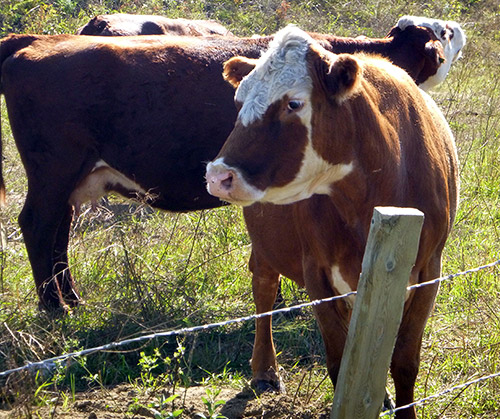Progress Report on the Lake Winnipeg Basin Initiative 2012 to 2013 and 2014 to 2014: chapter 4
The Lake Winnipeg Basin Stewardship Fund
In an ongoing effort to promote stewardship, protect water resources and achieve nutrient reductions through support of stakeholder-driven projects, Environment Canada was allocated $5.4 million in Grants and Contributions funds under Phase II of the LWBI to continue support of the Lake Winnipeg Basin Stewardship Fund (LWBSF). This fund provides financial support to implement high-impact, solution-oriented projects aimed at reducing nutrient loads and improving the ecological sustainability of the lake and watershed. Environment Canada administers this funding with support from multi-agency technical reviewers and a Public Advisory Committee (PAC).

Scientists are studying which types of soil release the most phosphorus during periods of prolonged flooding.
Phase II of the LWBSF focuses on projects in geographic areas known to have the most influence on water quality in Lake Winnipeg, such as the Red-Assiniboine river basin or Winnipeg River basin. Priority is given to physical stewardship projects with on-the-ground action that results in demonstrable nutrient reductions in the lake and watershed. Projects involving “tried and proven” activities as well as those demonstrating innovative techniques, technologies and measures to reduce nutrient inputs into Lake Winnipeg are good candidates for funding. The funding also supports activities that contribute to a better understanding of current conditions and track improvements in environmental quality within Lake Winnipeg and its watershed.
The program’s four strategic priorities are projects that:
- Reduce nutrient inputs from rural and urban sources;
- Control point and non-point sources of nutrients;
- Rehabilitate priority aquatic ecosystems that support nutrient reduction and sequestration; and
- Enhance research and monitoring capacity to assist in decision making.
Two special projects are being funded by the LWBSF in Phase II of the LWBI. Funding of $904,500 will be provided to the Lake Winnipeg Research Consortium to facilitate and coordinate monitoring and scientific research activities on Lake Winnipeg. This support will ensure the continued operation of the research vessel M.V. Namao, which is critical for scientific research and monitoring, as well as education related to Lake Winnipeg.
In addition, a funding agreement of $150,000 was signed with the University of Manitoba to operate and expand awareness and use of the Lake Winnipeg Basin Information Network. The intent of this Lake Winnipeg Web-based information portal is to provide access to relevant scientific data, models, information and tools, and support long-term information sharing, collaboration and support for water management and decision making in the basin.
Progress in 2012-2013 and 2013-2014
- In 2013, a new PAC was established. The PAC represents the interests of people who live and work around the lake and provides project funding recommendations to the Minister of the Environment. In Phase II, six PAC members were appointed by the Minister of the Environment. To ensure continuity, two members of the new PAC were also former members of the committee in Phase I.
- Following the first round of project proposals in Phase II (Round 6), the LWBSF moved to a single annual fall funding round to streamline the application and approval process. This change brings the LWBSF in line with other application-based Environment Canada funding programs.
- In 2012-2013, Environment Canada approved contribution funding of $2.73 million to 18 recipient groups to implement stewardship projects in the Lake Winnipeg basin. Most of the projects are multi-year projects, ending by March 2017. See Appendix 1 for a list of projects funded under Round 6 of the LWBSF.
- The $2.73 million in funding from Environment Canada leveraged approximately $6.4 million in cash and in-kind contributions from 97 project partners. For every dollar that Environment Canada contributed to stewardship projects in 2012-2013, project partners contributed $2.35 to help restore the health of Lake Winnipeg and its basin.
- Anticipated results from the 18 approved LWBSF projects in 2012-2013 include:
- A one-time reduction of 21 345 kg of phosphorus through one project, and an ongoing 17 954 kg/year reduction or diversion from use of phosphorus;
- 11 250 metres of stream/lake bank will be protected or stabilized;
- 16 000 native plants, trees and shrubs will be planted;
- 3400 hectares of wetlands/aquatic habitat will be protected or conserved;
- 574 erosion control structures will be installed;
- A risk indicator tool will be created to identify soils with a high risk of releasing phosphorus; and
- Four waste water treatment pilot technology/processes will be implemented or improved.
- In fall 2013, a total of 32 project applications were received and reviewed by technical experts. A PAC meeting was held in January 2014 to review the applications, and 16 projects were recommended for funding in the amount of $916,900. These projects have the potential to result in an additional reduction of 4051 kg of phosphorus per year across the watershed.
- The following project success indicators have already been exceeded or are on track to meet the short-term expected outcomes of the LWBSF:
- 10 800 kg/year of phosphorus reduced and/or sequestered within the Lake Winnipeg Basin. This LWBSF Phase II program goal was met through projects funded in 2012-2013;
- Accelerated restoration/creation of wetlands, the adoption of sustainable farming practices and the development of innovative waste treatment technologies/practices within the watershed. LWBSFprojects are already making a difference. Projects are expected to restore/create 4800 hectares of wetlands. Another 10 projects will also support and provide education on sustainable farming practice, and a further six projects will develop/improve waste water treatments; and
- Leverage $10 million in external stakeholder/partner cash and in-kind contributions towards stewardship efforts. So far, $9.4 million has been leveraged in Phase II.

Fencing keeps cattle out of waterways, reducing stream bank erosion and improving water quality.